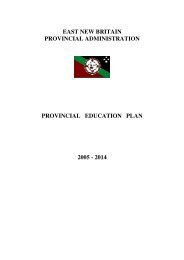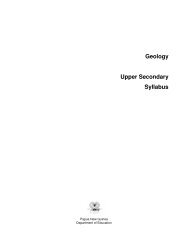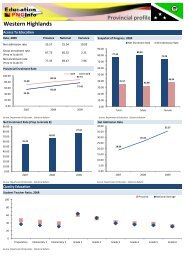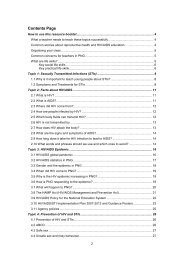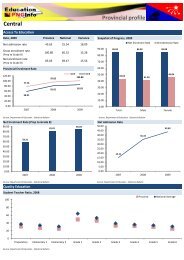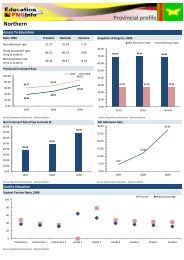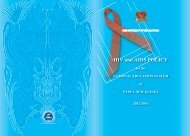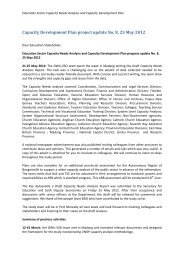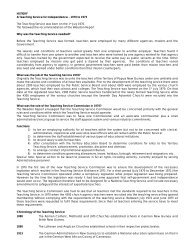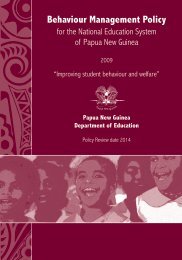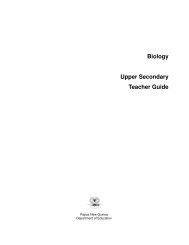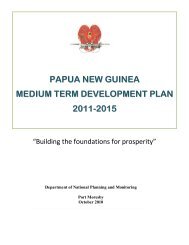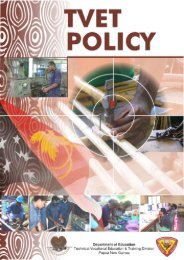Physical Education - Department of Education
Physical Education - Department of Education
Physical Education - Department of Education
You also want an ePaper? Increase the reach of your titles
YUMPU automatically turns print PDFs into web optimized ePapers that Google loves.
<strong>Physical</strong> education<br />
In Example 1, teachers would record an F for those students who fully<br />
demonstrated the criteria, a P for those who partly demonstrated the criteria<br />
and NMP for those students who need more practice.<br />
Examples 2 and 3 use numbers as codes to show how well the students met<br />
the assessment criteria. Teachers can choose which codes are the easiest<br />
for them to understand and use. Examples <strong>of</strong> how these codes can be used<br />
for recording appear in the section on Units <strong>of</strong> Work.<br />
Ways <strong>of</strong> recording information gained from analysing students’ products<br />
Teachers may keep written products or records <strong>of</strong> students’ achievements on<br />
particular assessment tasks in student portfolios.<br />
Tests<br />
Examples <strong>of</strong> when to use tests to assess students’ learning<br />
Tests are used mainly to assess students’ knowledge and understanding <strong>of</strong><br />
subject content. Tests should be used for both formative and summative<br />
assessment so that results can be used to help students improve in areas<br />
where they are having difficulty. At Lower Primary, tests are just one form <strong>of</strong><br />
assessment and should be used in conjunction with the other assessment<br />
methods. This balanced approach to assessment gives students a greater<br />
chance <strong>of</strong> being successful, as they are able to demonstrate their learning in<br />
different ways.<br />
Ways <strong>of</strong> recording test results<br />
Teachers normally record results <strong>of</strong> tests in record books. This can be done<br />
if the marks mean something and relate back to the outcomes. For example,<br />
if a test was out <strong>of</strong> 10, then those students who received marks:<br />
• between 8 and 10 have demonstrated a good understanding <strong>of</strong> the<br />
outcome being assessed<br />
• between 5 and 7 have demonstrated partial understanding <strong>of</strong> the<br />
outcome being assessed<br />
• <strong>of</strong> 4 or less, need more practice or further instruction.<br />
Teachers can also store students’ tests with their comments in students’<br />
portfolios.<br />
What to do with assessment information<br />
Once teachers have gathered information from a number <strong>of</strong> assessment<br />
tasks they should be in a position to make decisions about which outcomes<br />
students have achieved.<br />
Teachers need to look at all the evidence they have gathered about each<br />
student and decide if they have enough evidence to say that the student has<br />
achieved the outcome. Normally to make this decision, teachers must be<br />
sure that the student has demonstrated the outcome independently and on a<br />
number <strong>of</strong> occasions; sometimes informally and sometimes in assessment<br />
tasks. Teachers can then record which students have achieved which<br />
outcomes.<br />
15



